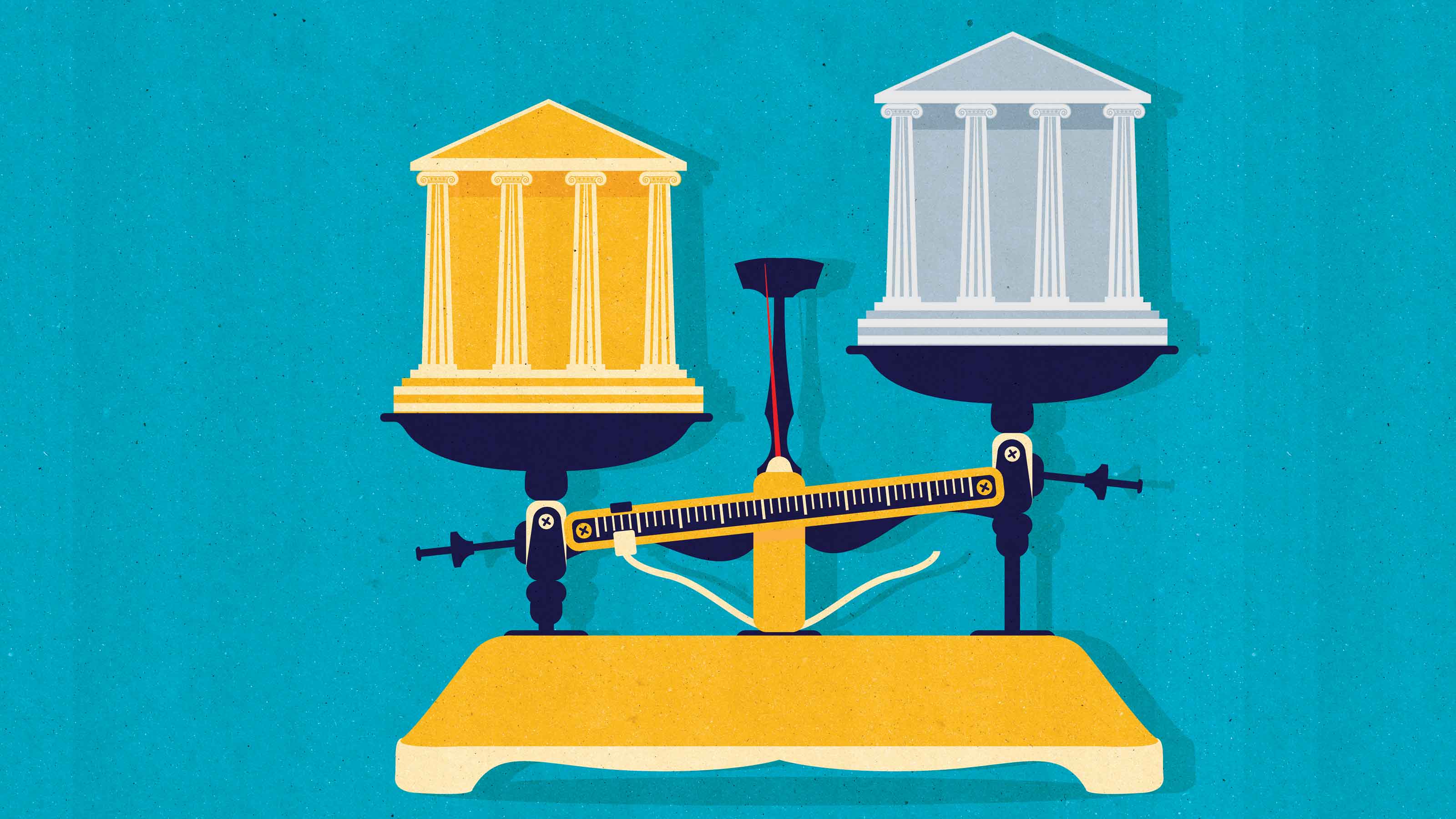Learning to Live Without a Paycheck
There’s a lot of evidence that retirees may be worrying too much about preserving their money.


One retirement truism I can personally vouch for is that once you give up the security of a steady paycheck, you’re exposed to a host of uncertainties: interest rate moves, stock market corrections and tax changes, to name a few. To hedge against things that are out of my control, I’ve elected to wait till age 70 to collect Social Security benefits as well as to take my pension as an annuity rather than a lump sum, both of which will maximize my regular income.
The latter is a popular strategy among Kiplinger’s readers. “I totally underestimated the value of a guaranteed income stream,” writes Bill Kleine. To create one for himself, Kleine converted a lump-sum payout from a former employer into a simple fixed annuity. Another reader converted a whole life insurance policy into a fixed annuity. (For more on this and other income ideas, see Make Your Money Last Through Retirement.)
To protect against potentially higher future tax rates, Dennis Kelly is withdrawing more than his required minimum distributions to take advantage of today’s relatively low rates. David and Janet Dennison are making charitable contributions from their pretax accounts to reduce the amount they’ll be required to take in RMDs when they turn 70½, which will also cut their tax bill.

Sign up for Kiplinger’s Free E-Newsletters
Profit and prosper with the best of expert advice on investing, taxes, retirement, personal finance and more - straight to your e-mail.
Profit and prosper with the best of expert advice - straight to your e-mail.
When the stock market hit bottom in 2009, Mike Hagedorn began putting $1,000 a month into a bank CD, later upping that to $2,000. Now he’s sitting on a six-figure cushion to protect against market downturns.
Too frugal? To preserve his savings, Del Richter is planning to use an ultraconservative 2% annual withdrawal rate instead of the traditional 4% benchmark. But Richter may be playing it too safe. Wes Moss, a certified financial planner (CFP) in Atlanta, recently took an updated look at the 4% rule and found that it’s still valid. In 70% of Moss’s scenarios, retirement funds lasted 50 years or more, and in the worst-case scenario, the money ran out in 29 years.
In fact, there’s a lot of evidence that retirees may be worrying too much about preserving their money. A recent study by the Employee Benefit Research Institute found that people are reluctant to dip into their assets, often spending down significantly less than half of their savings within the first two decades of retirement—and sometimes even increasing their nest egg (see Retirees, Go Ahead and Spend a Little More).
One reason is that retirees are self-insuring against potentially catastrophic expenses. Nevertheless, says EBRI CEO Lori Lucas, “they’re living sub-optimally, not spending money even though they could be.”
How to overcome their fear? Sometimes the solution is to put into place a financial plan “that gives you permission to spend,” says Brian Sykes, a CFP in Blue Bell, Pa. Sykes also recommends maintaining separate accounts for things such as basic bill-paying, travel and investment.
But frequently the spending barrier is mostly psychological. For years you’ve been saving regularly, and now you have to create a new habit by training yourself to do what doesn’t come naturally, says financial therapist Olivia Mellan. Her advice: “Practice spending your money, and reward yourself for the experience.”
Readers Bill and Betty Smith had been reinvesting RMDs in stock mutual funds, but this year they decided to have the money sent to a checking account instead “to motivate us to travel more,” says Bill. Paying for a family Mediterranean cruise was “a wonderful perk for those years of frugality.”
Kathy Comfort’s spending rewards are smaller but no less satisfying. She has created what she calls her wow bucket, which holds about two dozen slips of paper on which she has written “things that bring joy to my life”—everything from fresh flowers to a new pair of leather boots. Every two weeks, she pulls out a slip and buys what’s written on it. Says Comfort, “It gives me permission to treat myself.”
Get Kiplinger Today newsletter — free
Profit and prosper with the best of Kiplinger's advice on investing, taxes, retirement, personal finance and much more. Delivered daily. Enter your email in the box and click Sign Me Up.

Janet Bodnar is editor-at-large of Kiplinger's Personal Finance, a position she assumed after retiring as editor of the magazine after eight years at the helm. She is a nationally recognized expert on the subjects of women and money, children's and family finances, and financial literacy. She is the author of two books, Money Smart Women and Raising Money Smart Kids. As editor-at-large, she writes two popular columns for Kiplinger, "Money Smart Women" and "Living in Retirement." Bodnar is a graduate of St. Bonaventure University and is a member of its Board of Trustees. She received her master's degree from Columbia University, where she was also a Knight-Bagehot Fellow in Business and Economics Journalism.
-
 Stock Market Today: Stocks Soar on China Trade Talk Hopes
Stock Market Today: Stocks Soar on China Trade Talk HopesTreasury Secretary Bessent said current U.S.-China trade relations are unsustainable and signaled hopes for negotiations.
By Karee Venema
-
 2026 Disney Dining Plan Returns: Free Dining for Kids & Resort Benefits
2026 Disney Dining Plan Returns: Free Dining for Kids & Resort BenefitsPlan your 2026 Walt Disney World vacation now. Learn about the returning Disney Dining Plan, how kids aged three to nine eat free, and the exclusive benefits of staying at a Disney Resort hotel.
By Carla Ayers
-
 What Does Medicare Not Cover? Eight Things You Should Know
What Does Medicare Not Cover? Eight Things You Should KnowHealthy Living on a Budget Medicare Part A and Part B leave gaps in your healthcare coverage. But Medicare Advantage has problems, too.
By Donna LeValley
-
 15 Reasons You'll Regret an RV in Retirement
15 Reasons You'll Regret an RV in RetirementMaking Your Money Last Here's why you might regret an RV in retirement. RV-savvy retirees talk about the downsides of spending retirement in a motorhome, travel trailer, fifth wheel or other recreational vehicle.
By Bob Niedt
-
 13 Smart Estate Planning Moves
13 Smart Estate Planning Movesretirement Follow this estate planning checklist for you (and your heirs) to hold on to more of your hard-earned money.
By Janet Kidd Stewart
-
 Should You Rent in Retirement?
Should You Rent in Retirement?Making Your Money Last Renting isn't right for all retirees, but it does offer flexibility and it frees up cash.
By Sandra Block
-
 The Problem With 401(k) Catch-Up Contributions for 2024
The Problem With 401(k) Catch-Up Contributions for 2024Retirement Plans New rules governing certain 401(k) catch-up contributions caused confusion and raised concern.
By Kelley R. Taylor
-
 The Best Banks of 2024
The Best Banks of 2024Making Your Money Last Kiplinger's list of the best banks, based on interest rates, fees and other features.
By Lisa Gerstner
-
 Half of Mothers Have Little or No Retirement Savings
Half of Mothers Have Little or No Retirement SavingsMother’s Day comes and goes, but many moms face future financial insecurity because they have little or no retirement savings.
By Kelley R. Taylor
-
 Retirees: Cohousing is Growing. Is it Right for You?
Retirees: Cohousing is Growing. Is it Right for You?This model of housing is designed to increase interaction. For some retirees, this is a draw. But you should know the details.
By Susan J. Wells